|
Spring at Grazer Kunstverein
9 March – 19 May 2018
Carl Johan Högberg
She Who Speaks
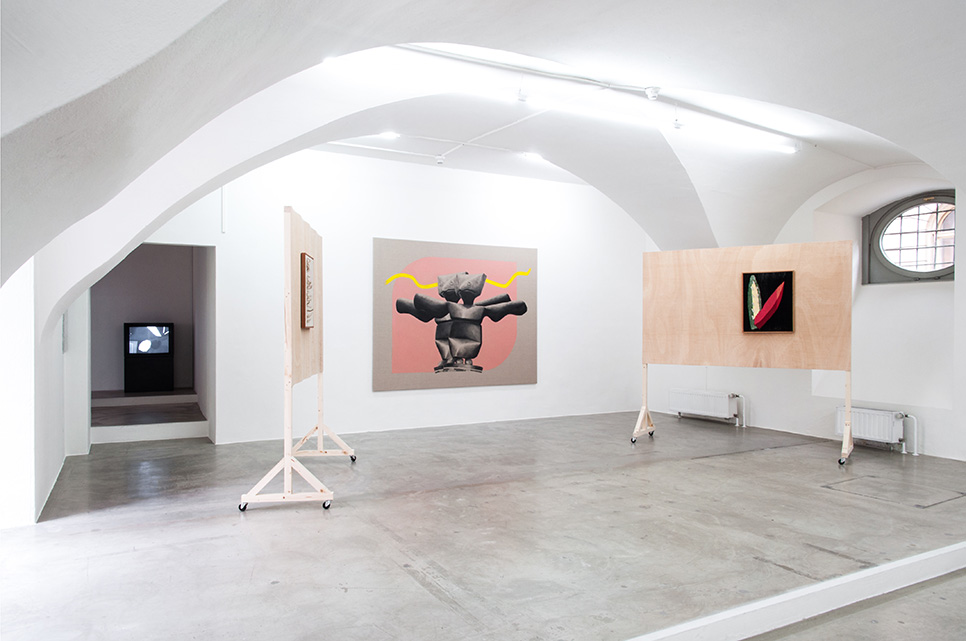
Carl Johan Högberg, installation view of She Who Speaks, Spring 2018, Grazer Kunstverein. Photography by Christine Winkler
Carl Johan Högberg has transformed the main gallery of the Grazer Kunstverein into a space for a séance. With paintings referencing art historical figures from Max Ernst (with a doubled depiction of Le Génie de la Bastille) to Henry Moore (with three haunting interpretations of the angelic face of a reclining bronze sculpture) Högberg is interested in not only ‘She Who Speaks’ but also in ‘He Who Interprets’.
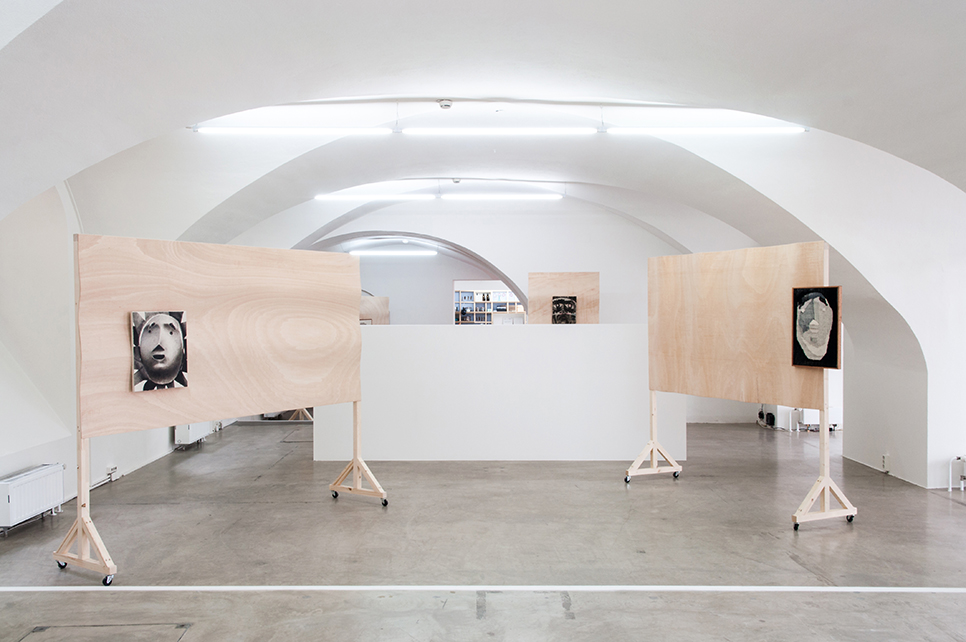
Carl Johan Högberg, installation view of She Who Speaks, Spring 2018, Grazer Kunstverein. Photography by Christine Winkler
Hélène Smith (1861–1929) is the driving force behind the exhibition and was the inspiration for the creation of each of the works within it. She herself is a fascinating figure, a clairvoyant well known in 19th century Switzerland, who became a much sought-after muse for Surrealist artists from Paris to Geneva. She famously hosted séances during which she would speak in tongues, relay messages from the dead, and embody characters such as the late Hindu princess Simandini and the doomed French queen Marie Antoinette. Smith introduced the first ever comprehensive overview of the Martian language to the world.

Carl Johan Högberg, installation view of She Who Speaks, Spring 2018, Grazer Kunstverein. Photography by Christine Winkler
The fantastical visions of Hélène Smith, and her undulating, trance-induced retelling of them, attracted great curiosity among the artistic and spiritual circles of the day. One of these admirers and subsequent interpreters was Théodore Flournoy. In 1899 he published his study From India to the Planet Mars,* which denounced Smith’s spiritual claims as fanciful romances, performed to impress and nothing more. Interestingly this led to the development of Smith’s own painterly evolution as an artist, as she tried to take ownership of her own visions and of Flournoy’s unflattering interpretations through visual rather than vocal means.
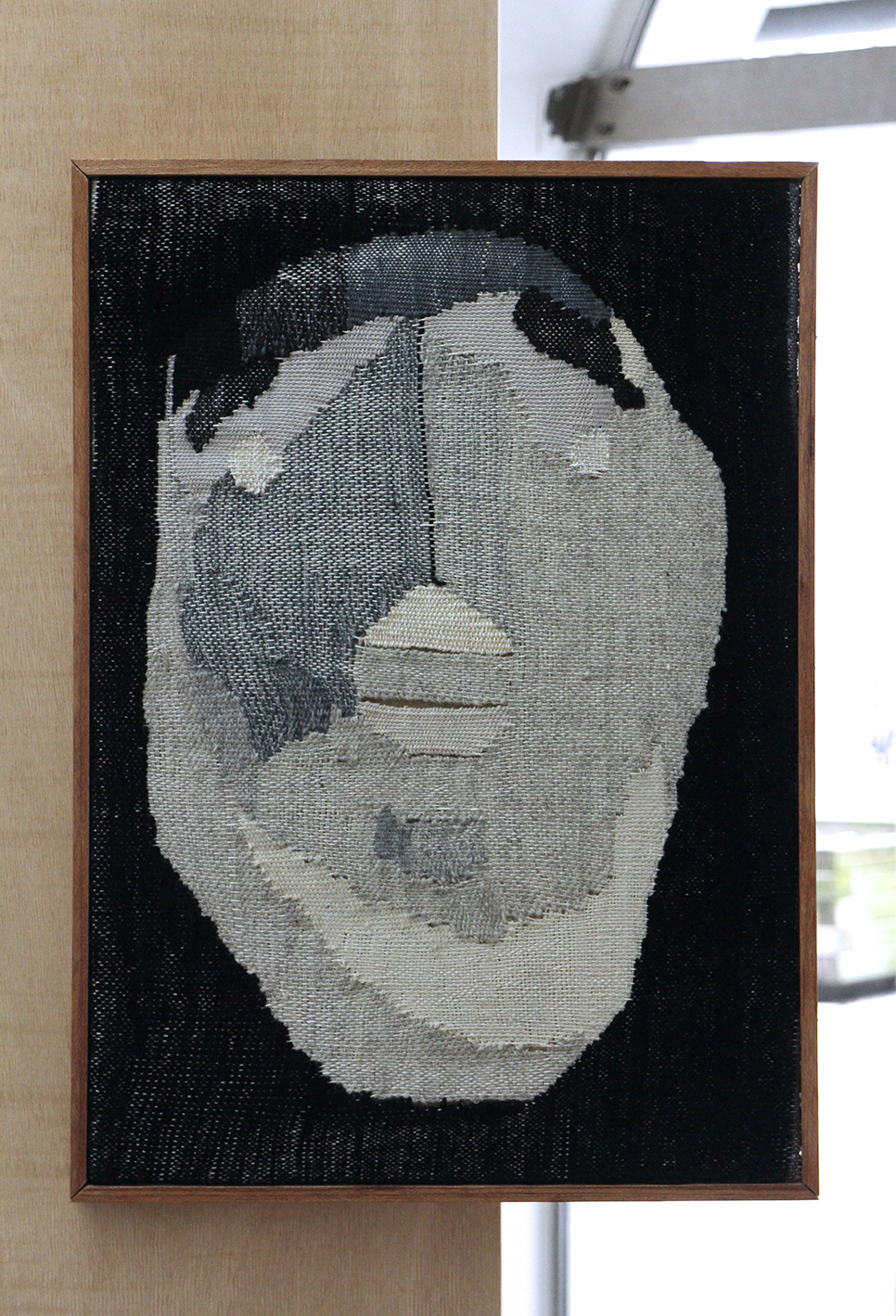
Carl Johan Högberg, detail view of She Who Speaks, Spring 2018, Grazer Kunstverein. Image courtesy of the artist
Reaching across historical time, Högberg strikes a kinship with the lost voice of Smith, questioning as he does so, the validity of engaging trans-temporally with her legacy, and of becoming, through painting, tapestry and rolling walls, a contemporary medium for her story, the truth of which is still open to interpretation.
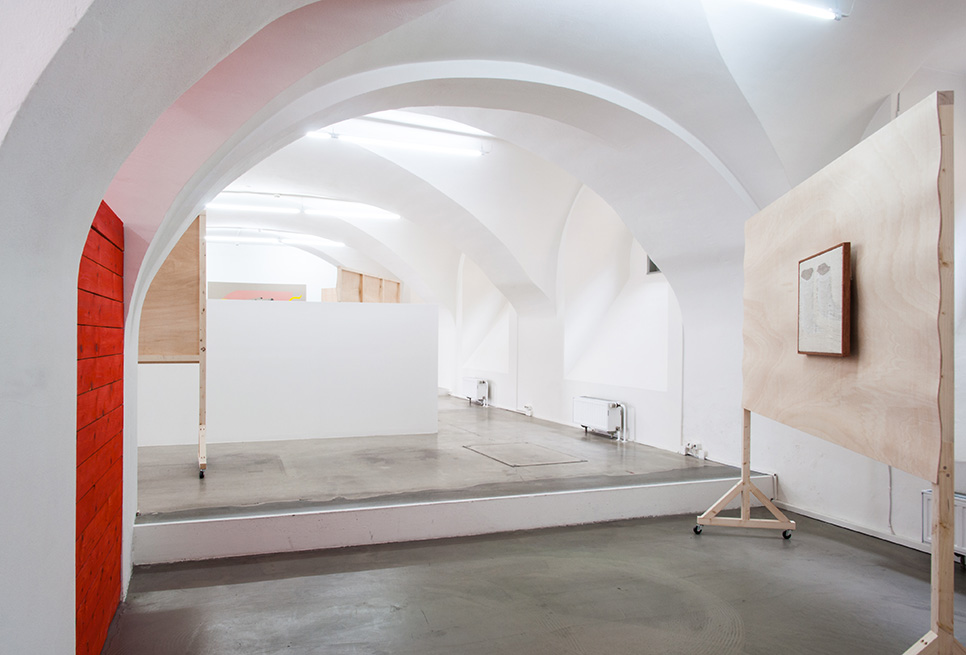
Carl Johan Högberg, installation view of She Who Speaks, Spring 2018, Grazer Kunstverein. Photography by Christine Winkler
Carl Johan Högberg (b. Eskilstuna, Sweden, 1979) works with painting, textiles and installation, examining specific scenarios to unfold ideas around knowledge, power, and the human condition. In his work, Högberg asks if it is possible to speak with another, or on behalf of another, through a kinship felt across historical time. Oscillating between interpretive registers, he is drawn to situations where reason has conquered superstition yet the fiction outlives the facts. Högberg studied at Gerrit Rietveld Academie and De Ateliers. Solo exhibitions include: Galerie Ron Mandos (upcoming), Hordaland Kunstsenter, Norway (2015), Galerie Ron Mandos, Netherlands (2015), Galleri Christian Larsen, Sweden (2013), BIS71, Netherlands (2011) and SMART Project Space, Netherlands (2009). Group shows include the Salzburger Kunstverein (upcoming), Image Drain, Estonia (2017), Nest, Netherlands (2016), LIAF, Lofoten, Norway (2015), Palais de Tokyo, France (2013), Dordrecht museum, Netherlands (2011), and Bonniers konsthall, Sweden (2010). He has had residencies at IASPIS, Stockholm, Sweden; Hordaland Kunstsenter, Bergen, Norway; and Künstlerhaus Bethanien, Berlin, Germany. He has been awarded the Royal Dutch Painting Prize, the Elice Erlandssons scholarship, and several grants from the Mondriaan Fonds, Amsterdam Fonds voor de kunst and Konstnärsnämnden, among others.
http://www.carljohanhogberg.com
The production of new work by Carl Johan Högberg is supported by Mondriaan Fonds and AFK, Amsterdam Fonds voor de Kunst.
Niamh O’Malley
Foiled Glass
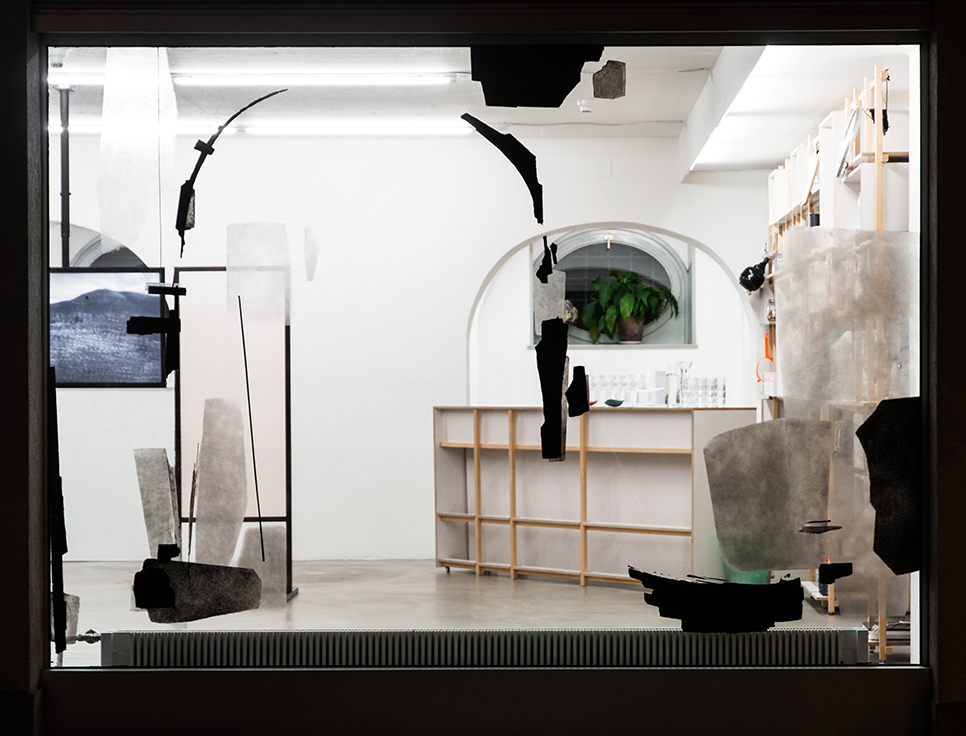
Niamh O’Malley, installation view of Foiled Glass, Spring 2018, Grazer Kunstverein. Photography by Christine Winkler
Foiled Glass begins with a window painting on the façade of the Grazer Kunstverein. These marks articulate the artist’s interest in the formal qualities of image-making. Specific textures from transparent clouding to opaque blocking, and shapes from architectural arcs to gestural lines come together to subtly obscure, frame and reframe the space around them. Glass is something we look through and look at, both a lens and an object. With her exhibition Foiled Glass O’Malley explores this paradox through various means and materials, ranging from drawing and sculpture to video and the moving image.
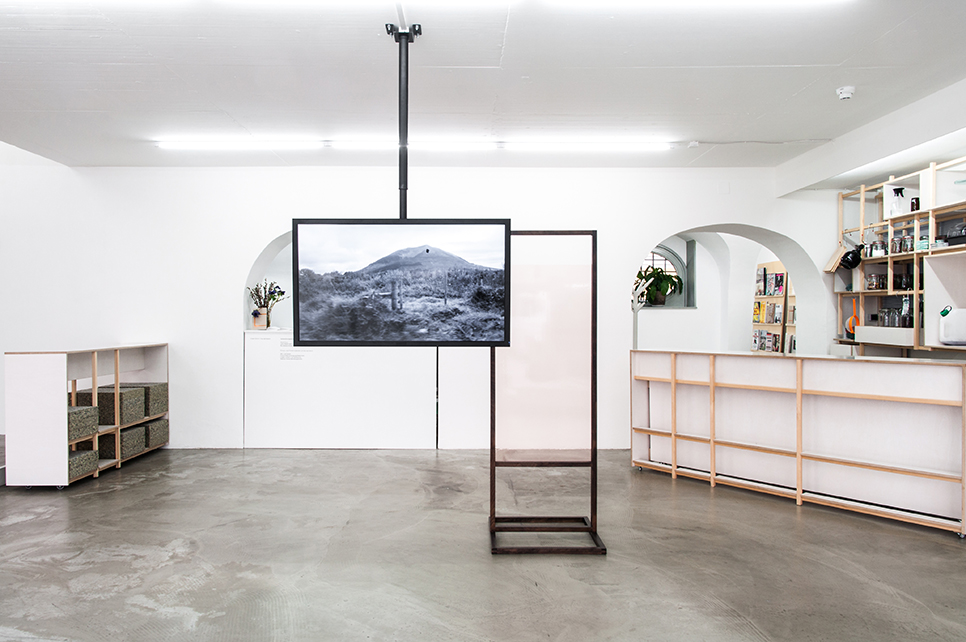
Niamh O’Malley, installation view showing Nephin, as part of Foiled Glass, Spring 2018, Grazer Kunstverein. Photography by Christine Winkler
Throughout the exhibition, the works become ways to explore the act of looking – where looking also alludes to understanding, capturing, holding, or simply seeing. Reflecting in some ways the role of the artist, the tiny black smudge featured in the video work Nephin (on view in the reception room) serves to point out and make visible the looming presence of the mountain, while at the same time abstracting and obscuring potential readings of it.
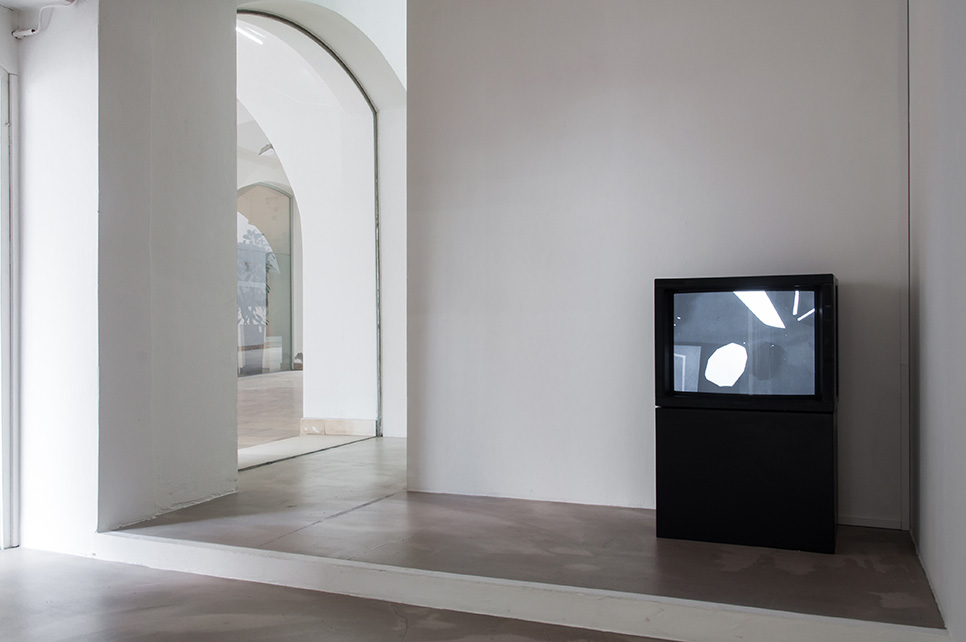
Niamh O’Malley, installation view showing Shape, as part of Foiled Glass, Spring 2018, Grazer Kunstverein. Photography by Christine Winkler

Niamh O’Malley, Shelf (curve), 2015, as part of Foiled Glass, Spring 2018, Grazer Kunstverein. Photography by Christine Winkler
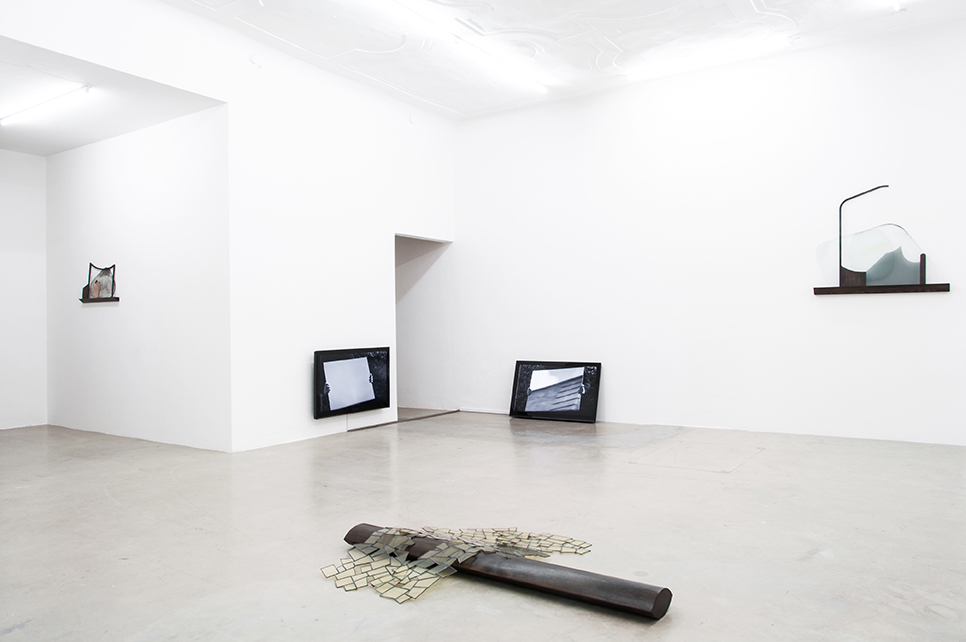
Niamh O’Malley, installation view of Foiled Glass, Spring 2018, Grazer Kunstverein. Photography by Christine Winkler
The deeper one ventures into the exhibition, guided by shapes and shelves from corner to corridor, the more apparent O’Malley’s fixation with the act of looking, or attempt to capture and frame particular moments or phenomena becomes. Her work Shape lucidly traces an attempt to choreograph cut-outs against the natural drift and flow of water. Other works sculpturally invoke a similar approach and underscore the artist’s attempts to manipulate materials in ways that reorient or cast into doubt one’s perception of them. Full of reflection, both literal and metaphorical, filled with absence and framed by negative space, O’Malley’s work persistently conjures attempts to frame, pause, reflect and reinterpret.
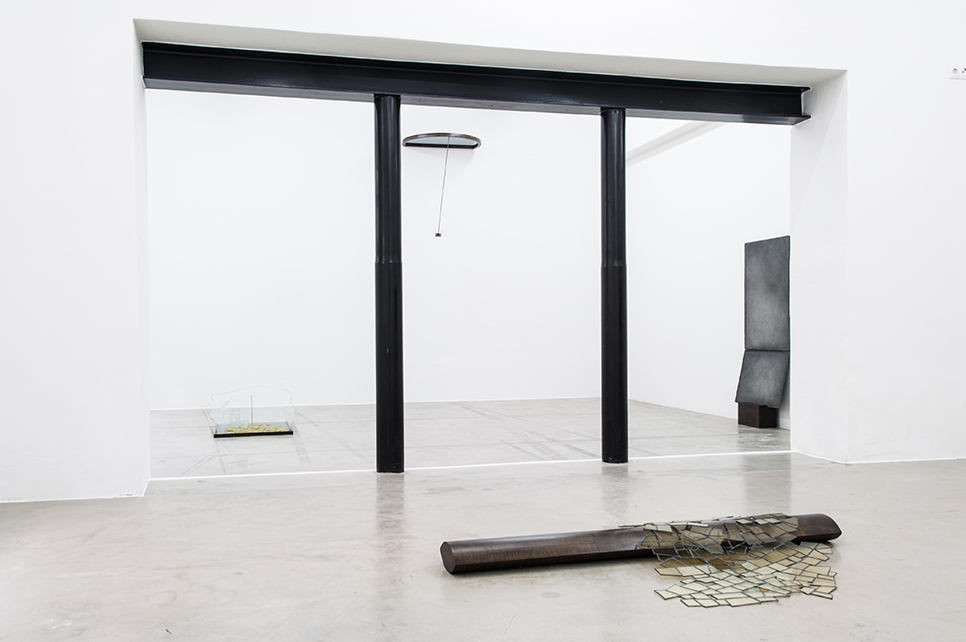
Niamh O’Malley, installation view of Foiled Glass, Spring 2018, Grazer Kunstverein. Photography by Christine Winkler
Niamh O’Malley (b. Mayo, Ireland, 1975) uses video, drawing, painting and sculpture, to examine ways in which we try to access the world through images. Her works often act as filters and invite us to enter the spaces between objects and places and our ideas of them. Solo exhibitions include: Douglas Hyde Gallery, Dublin (2017) & (2014), Bluecoat Liverpool, (2015), a five-venue solo show ‘The Mayo Collaborative’ Ireland (2013), ‘Garden’, Project Arts Centre, Dublin (2013) Ha Gamle Prestegard, Norway (2012), ‘Model’, Green on Red Gallery, Dublin, Ireland (2011), ‘Island’, Centre Culturel Montehermoso, Vitoria-Gasteiz, Spain (2010), ‘Frame, Glass, Black’, Centre Culturel Irlandais, Paris, France (2010), ‘Echo’, Gaain Gallery, Seoul, Korea (2010), ‘No Distance’, Void, Derry, Northern Ireland (2009). Selected group exhibitions include CAG, Vancouver, Karst, Plymouth, Eli & Edythe Broad Museum, Michigan, Glucksman Gallery, Cork, eva International, Biennale of Visual Art, Limerick, Tulca Visual Arts Festival, Galway, Kilkenny Arts Festival, White Box, New York, Model, Sligo Irish Museum of Modern Art, Kunstverein Ludwigsburg, Germany, Maria Stenfors, London. Recent critical writings on her practice can be read in Frieze, Artmonthly, ArtReview, Artforum, thisistomorrow, Enclave Review, and Paper Visual Art.
http://www.niamhomalley.com
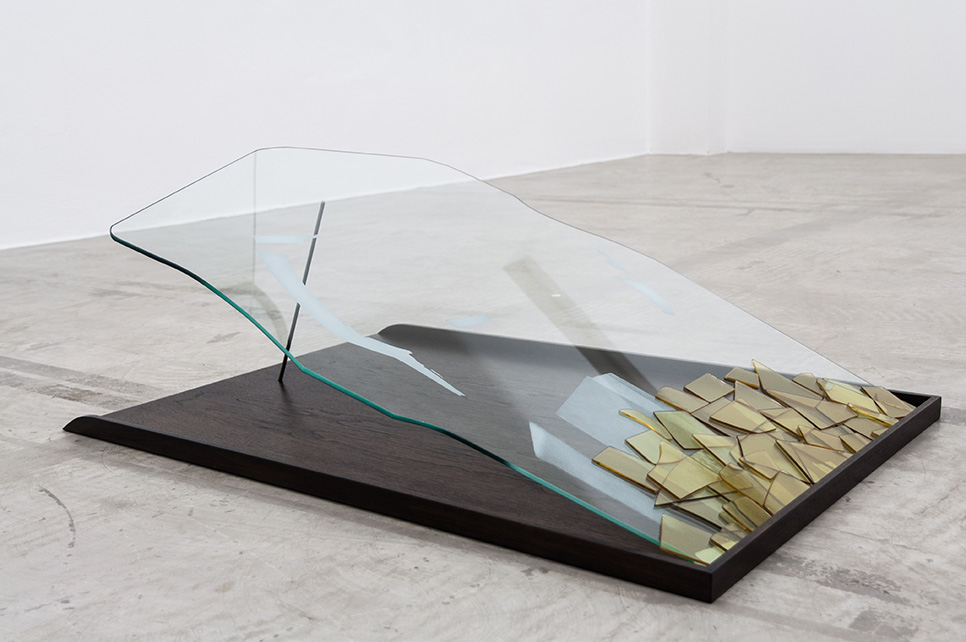
Niamh O’Malley, Tilted Glass, 2015, as part of Foiled Glass, Spring 2018, Grazer Kunstverein. Photography by Christine Winkler
Niamh O’Malley is supported by the Arts Council of Ireland and her presentation at Grazer Kunstverein is kindly supported by Culture Ireland.
Triple Candie
If Michael Asher part I
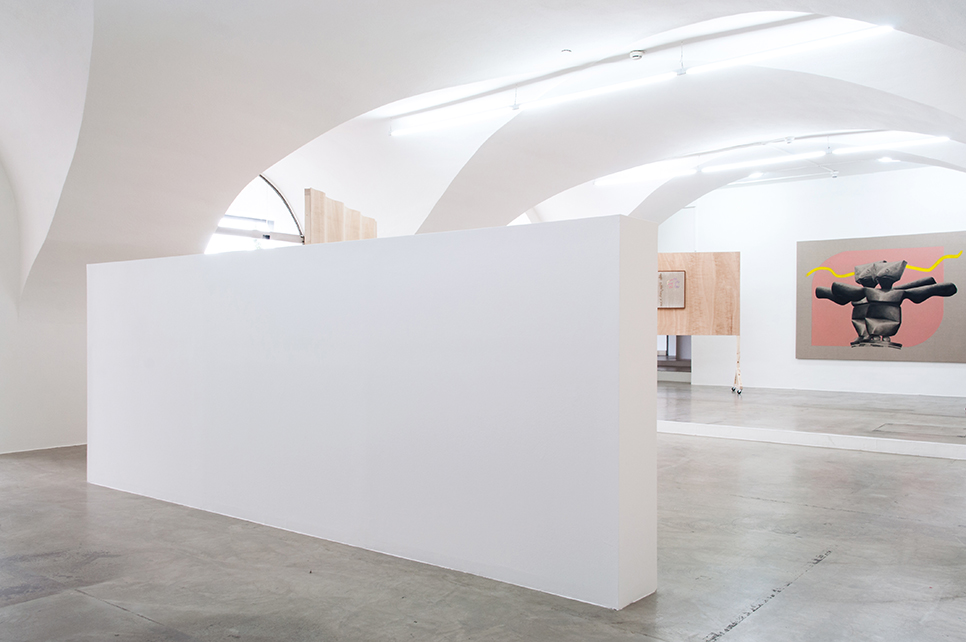
Triple Candie, If Michael Asher part I, Spring 2018, Grazer Kunstverein. Photography Christine Winkler
Part I of Triple Candie’s engagement with Grazer Kunstverein (on view 9 March–19 May 2018) consisted of the speculative insertion of a wall in the midst of an active exhibition space, accompanied by the following process note:
The Grazer Kunstverein has occupied a number of buildings since its founding in 1986. It moved into its current location, the Palais Trauttmansdorff, in 2010, at first filling the main, barrel-vaulted gallery and the suite of rooms immediately to the east. The front door off the courtyard led directly into the main gallery. The administrative offices were located at one end, behind a white, freestanding, half-wall. In 2013, the Kunstverein added the adjacent space to the west. A passageway was cut behind the office area to connect the two units, the half-wall was removed, and the office and front door were relocated.
We are interested in how these changes to the Grazer Kunstverein’s architecture over time infiltrate visitors’ memories and impact their experiences and expectations. We propose re-situating the half-wall in the main gallery. It will sit in its original location, but it will no longer hide the office or exist in a neutral state as part of the gallery’s architecture. It will obstruct the new path of circulation, partially obscuring access to another exhibition in the same room.

Triple Candie, If Michael Asher part I, Spring 2018, Grazer Kunstverein. Photography Christine Winkler
Triple Candie is a US-based, avant-garde curatorial production agency that collaborates with museums and contemporary art spaces on exhibitions about art but generally devoid of it. From 2001 to 2010, it had a gallery in Harlem. Since then, it has presented projects in Australia, Europe, and the United States at such venues as Chateau Shatto, Los Angeles; Deste Foundation, Athens; Gertrude Contemporary, Melbourne; Museum of Contemporary Art Detroit; Project Arts Centre, Dublin; and Utah Museum of Contemporary Art, Salt Lake City. Surveys of Triple Candie’s work have appeared at FRAC Île-de-France/ Le Plateau, Paris (2012) and Addison Gallery of American Art, Andover, Massachusetts (2017).
http://www.triplecandie.org
|
![]()
![]()